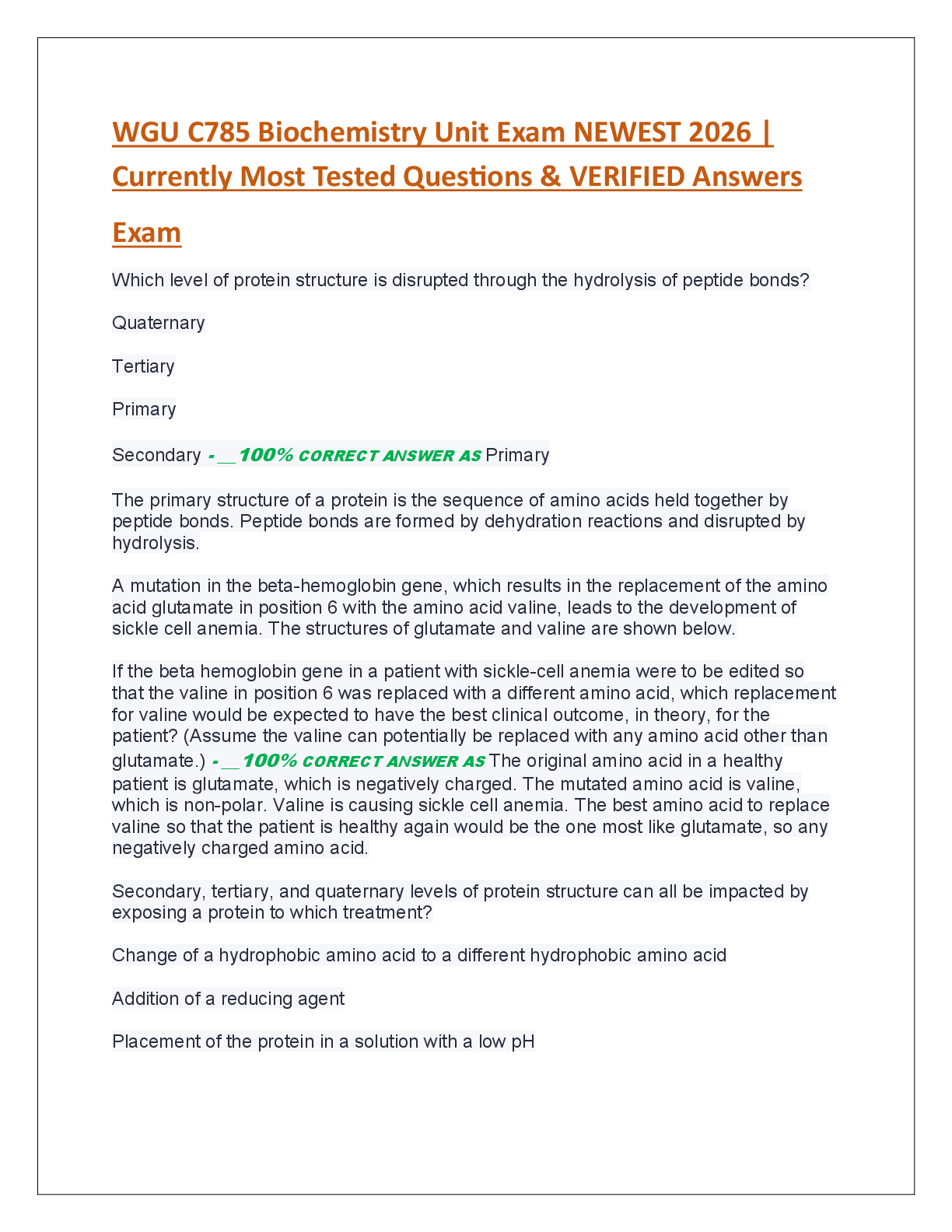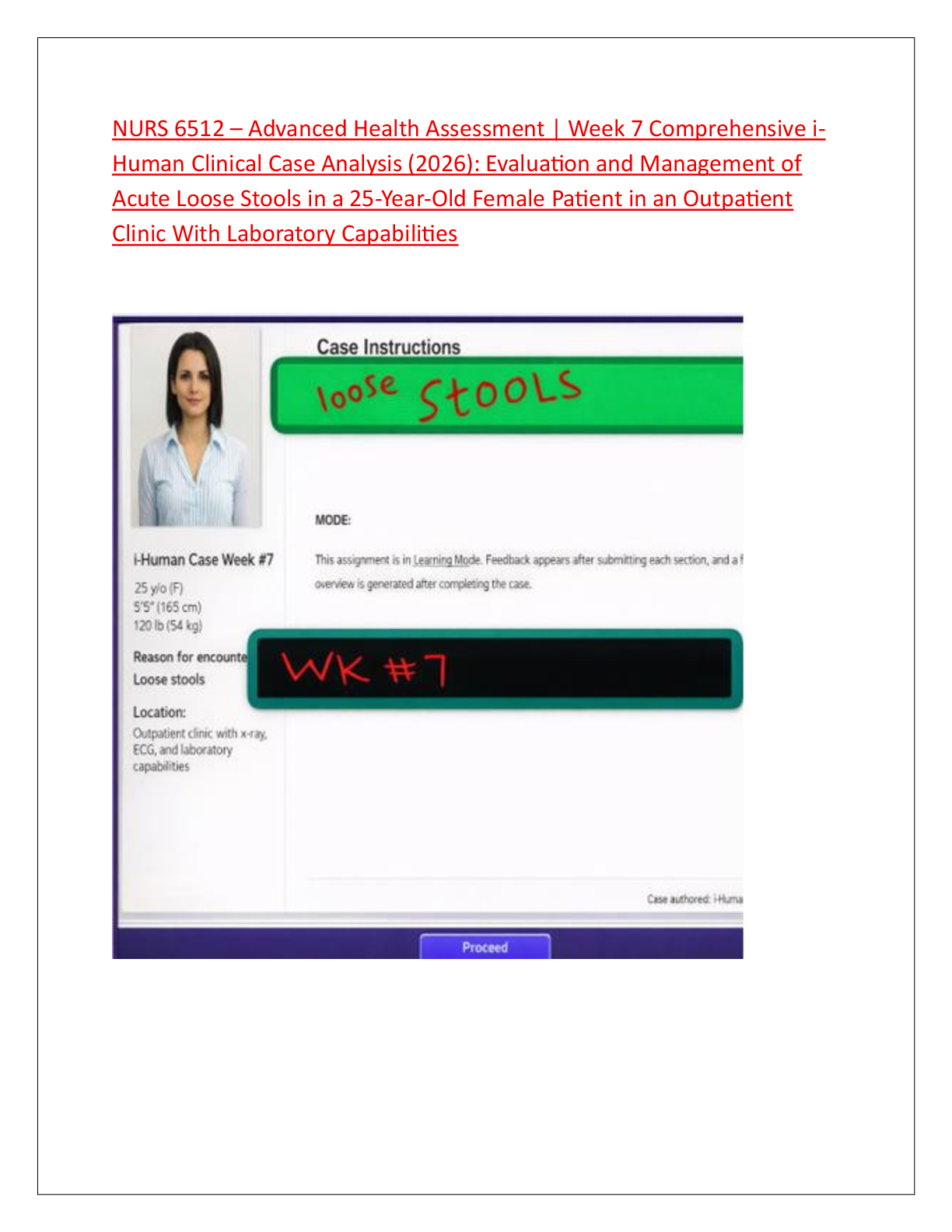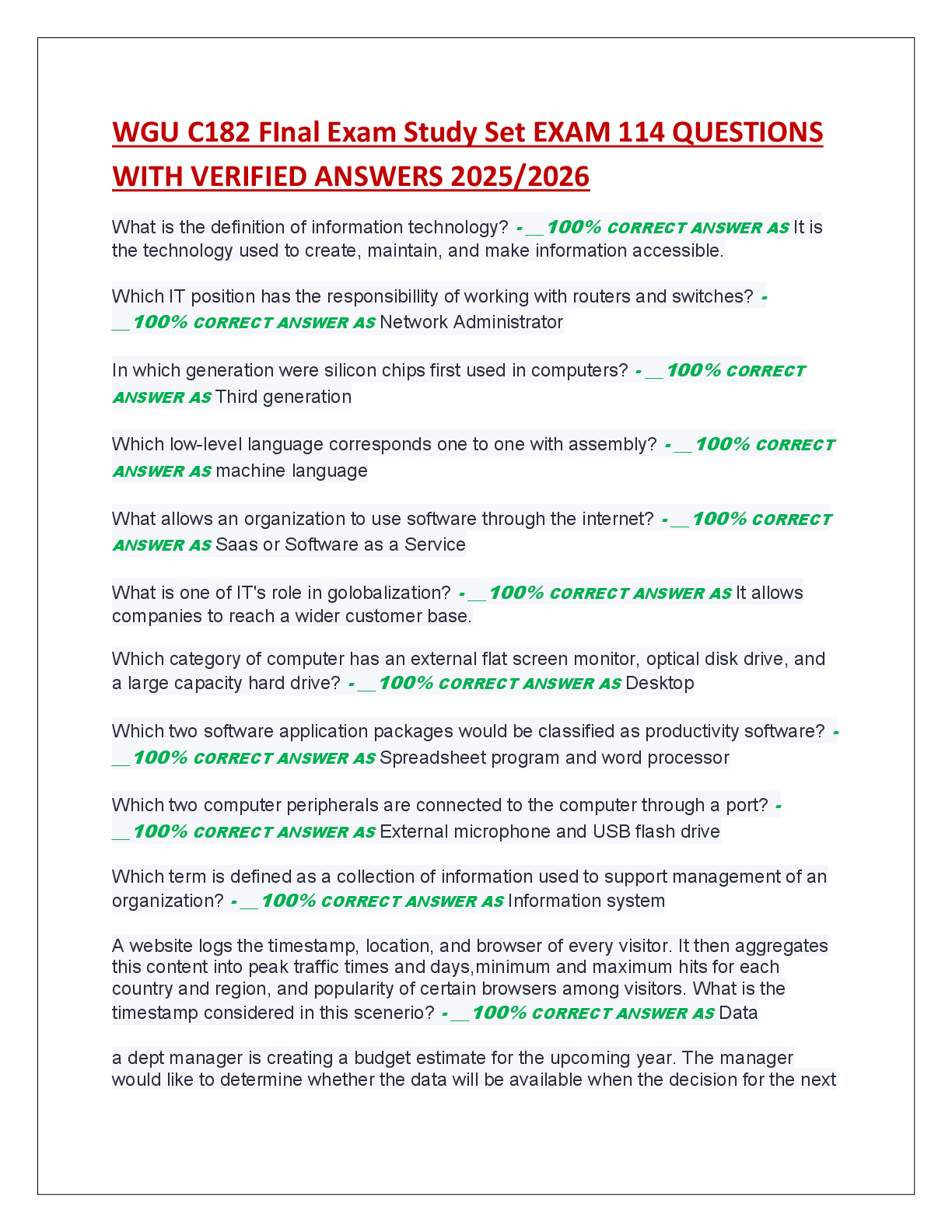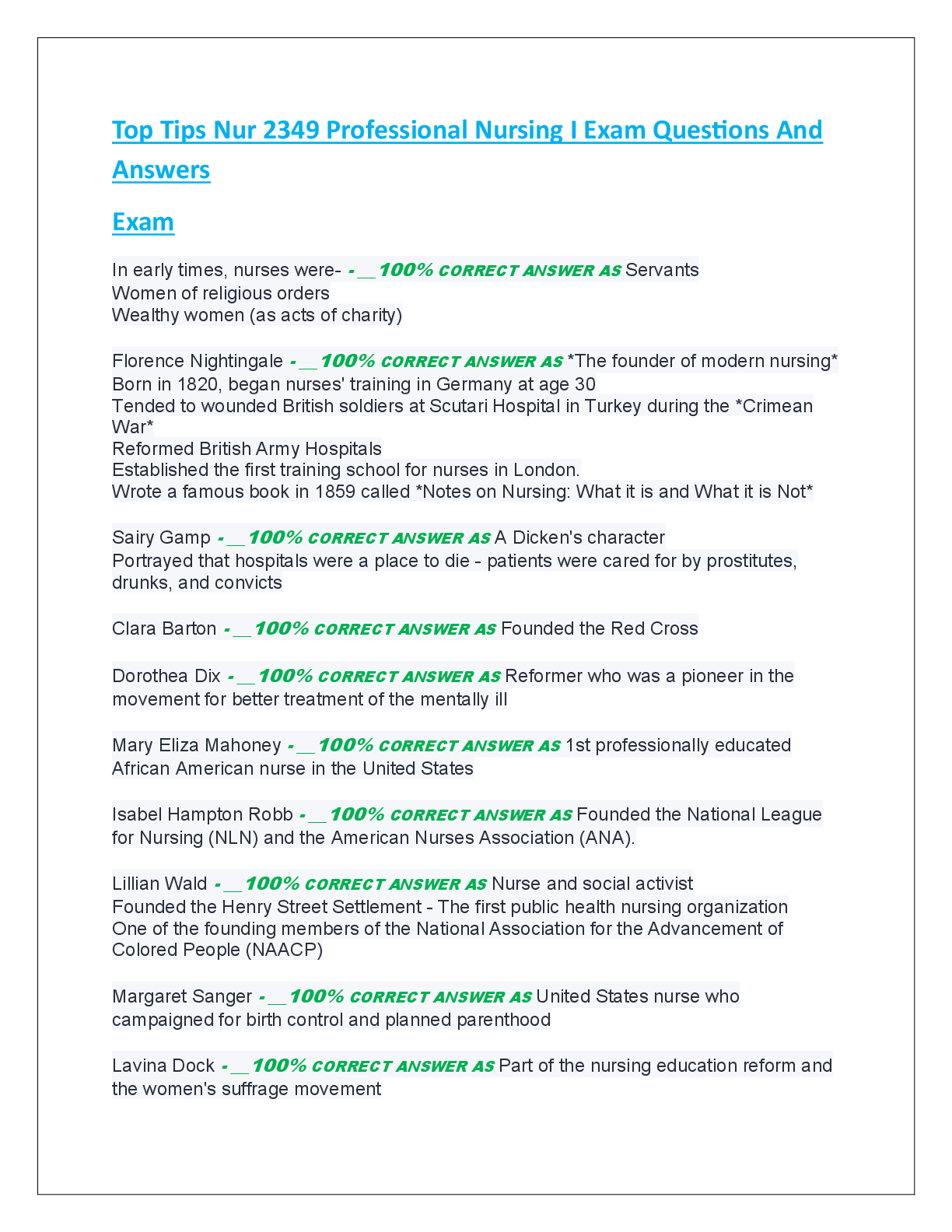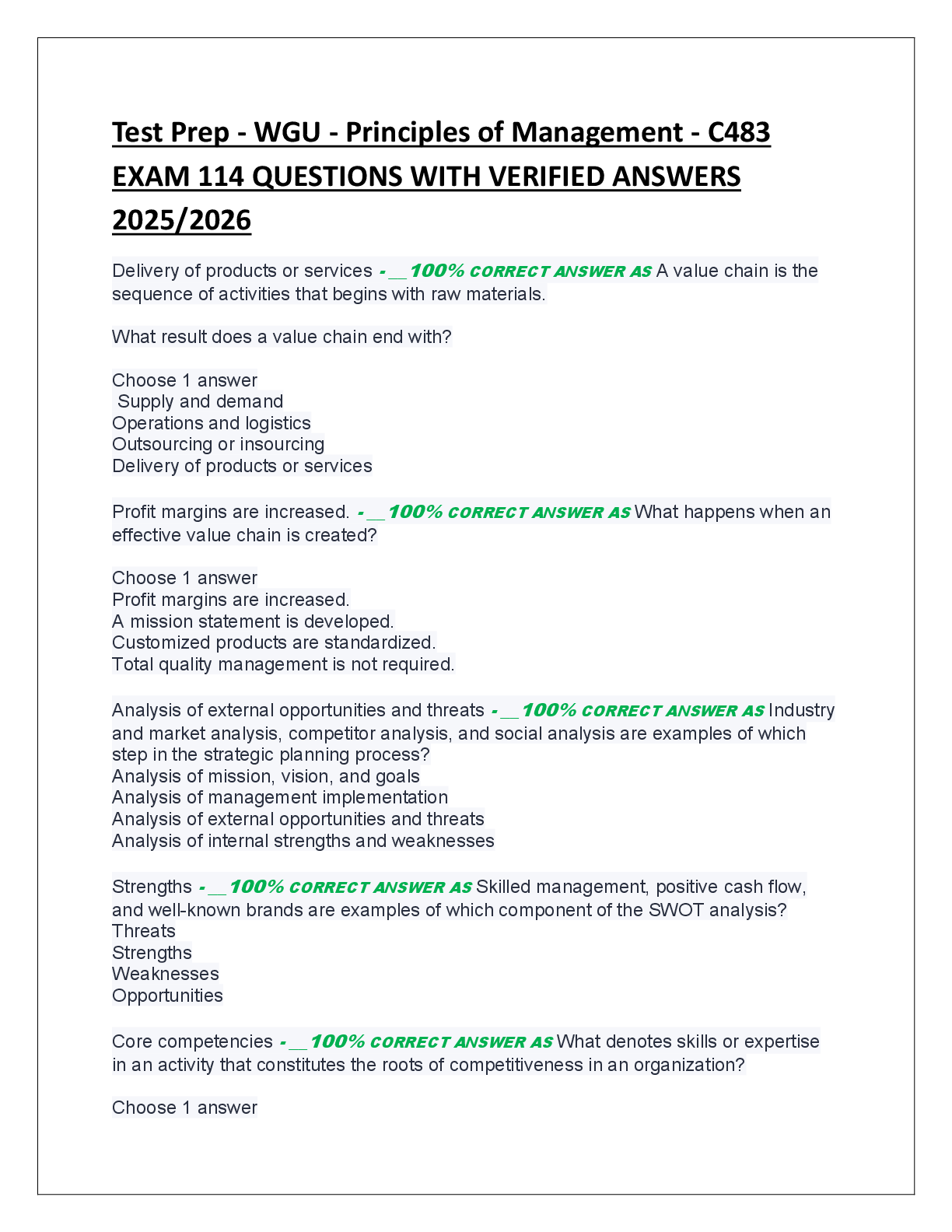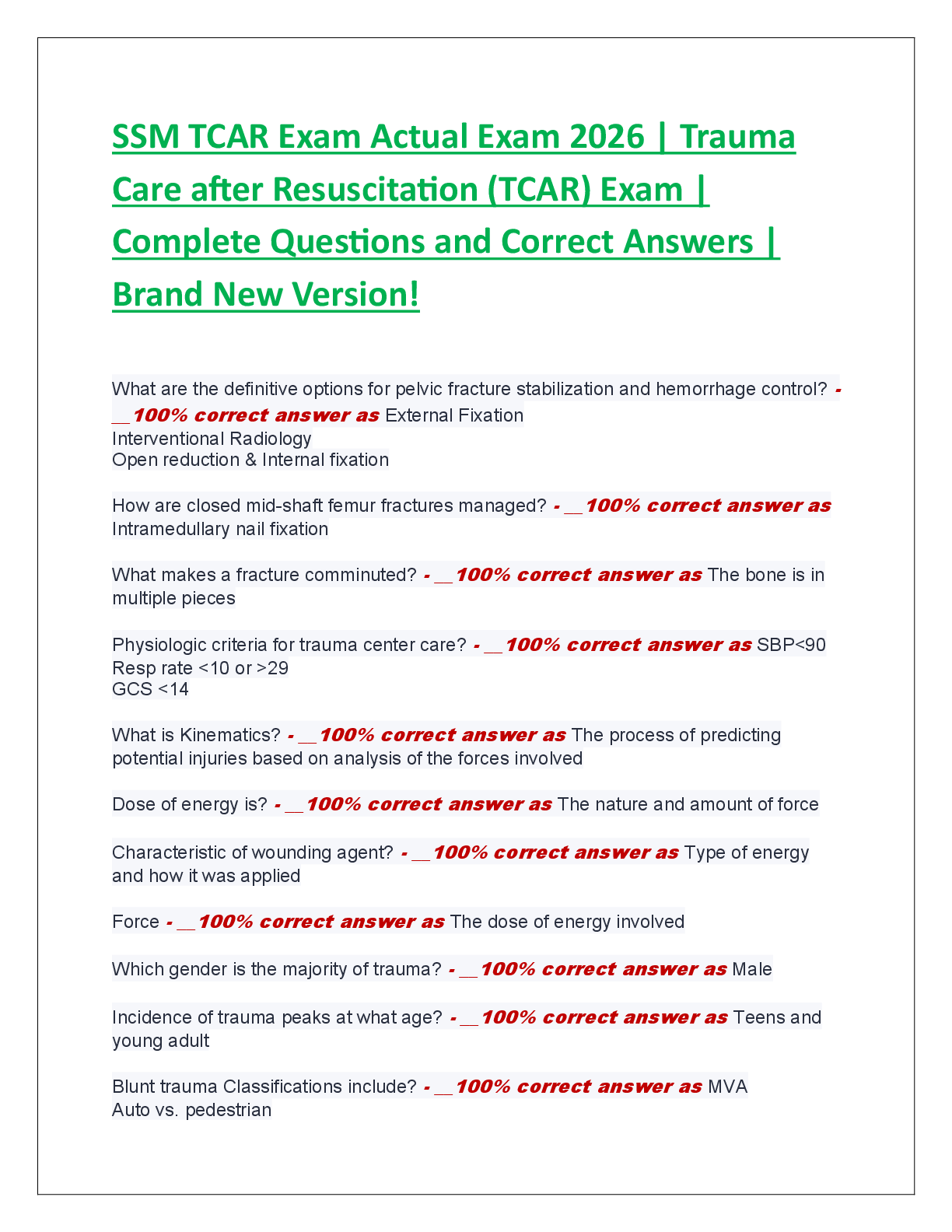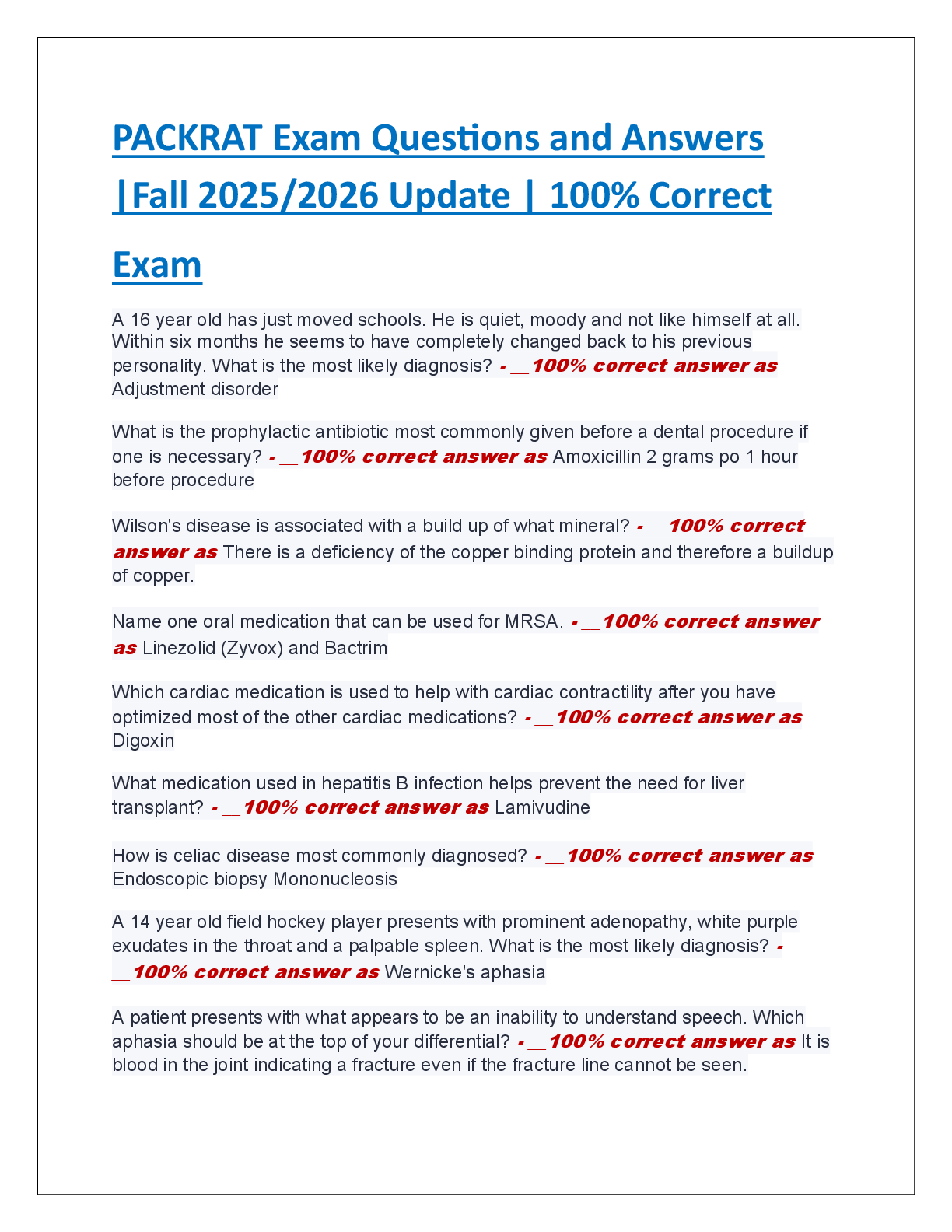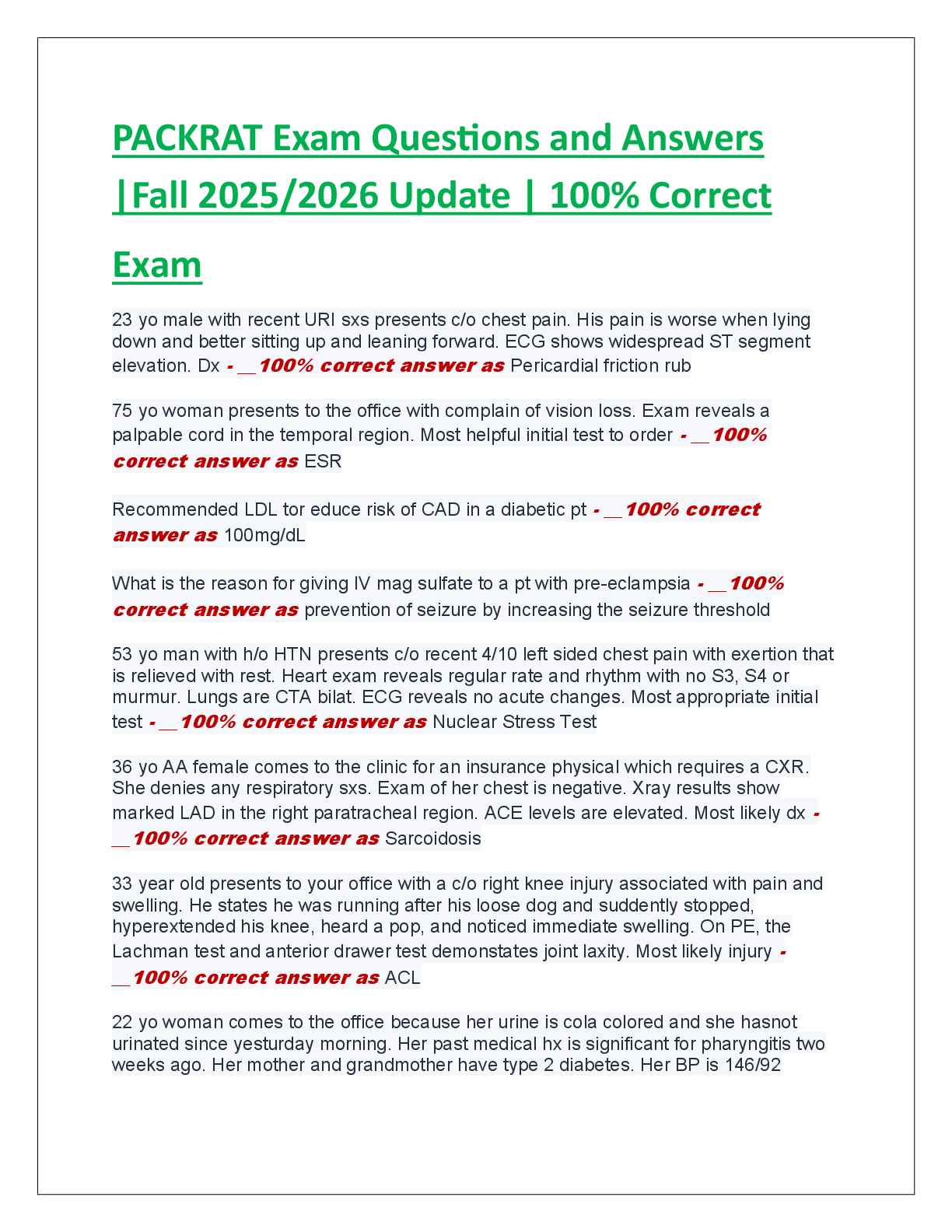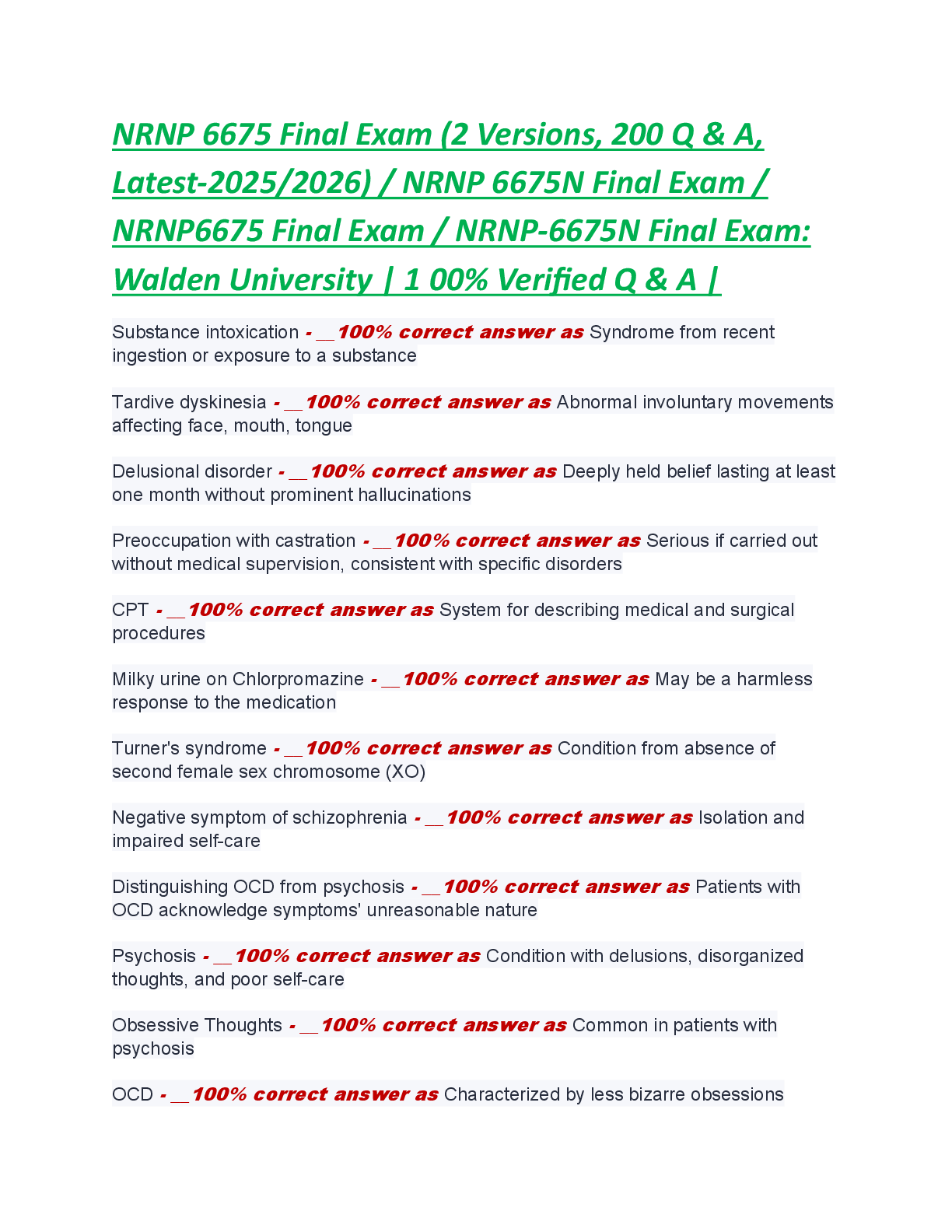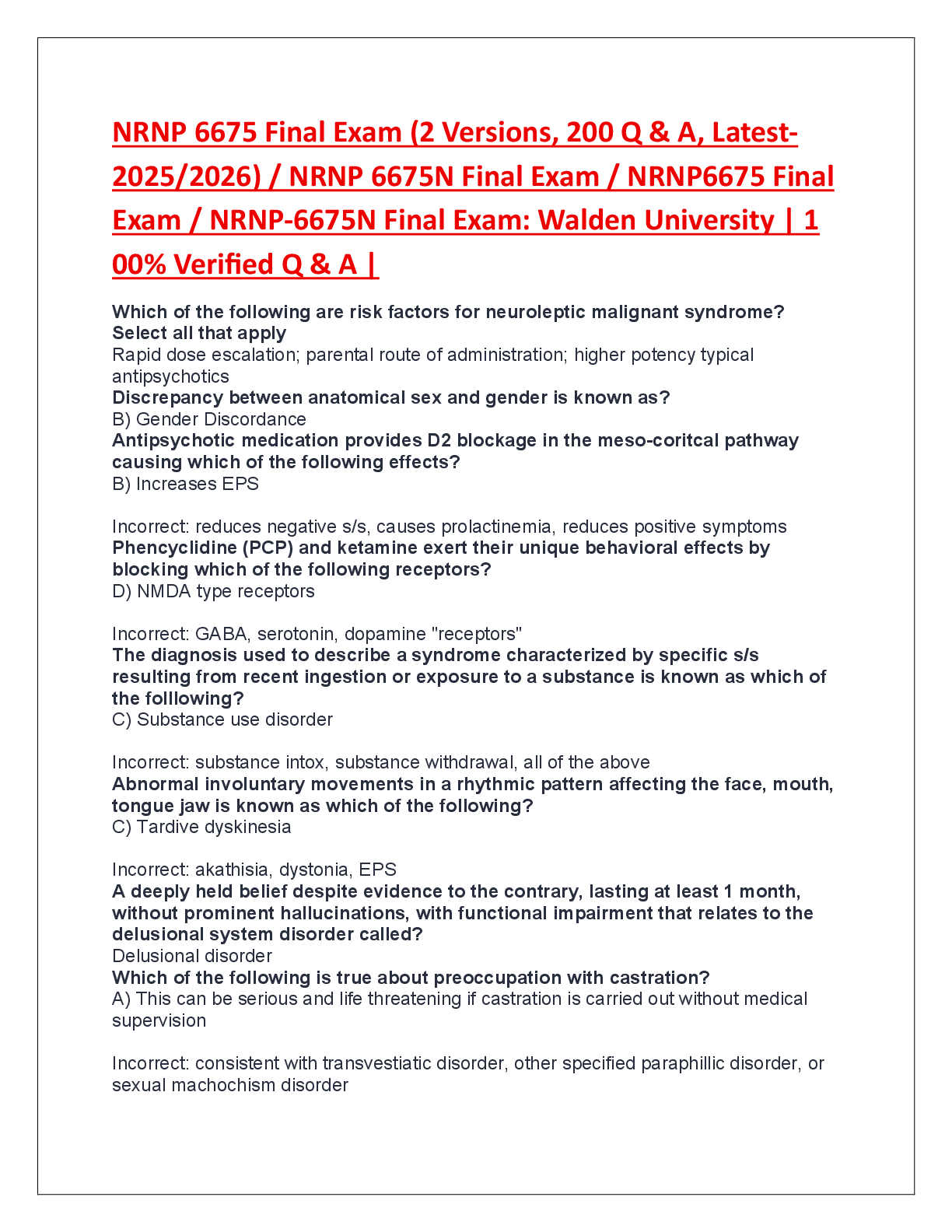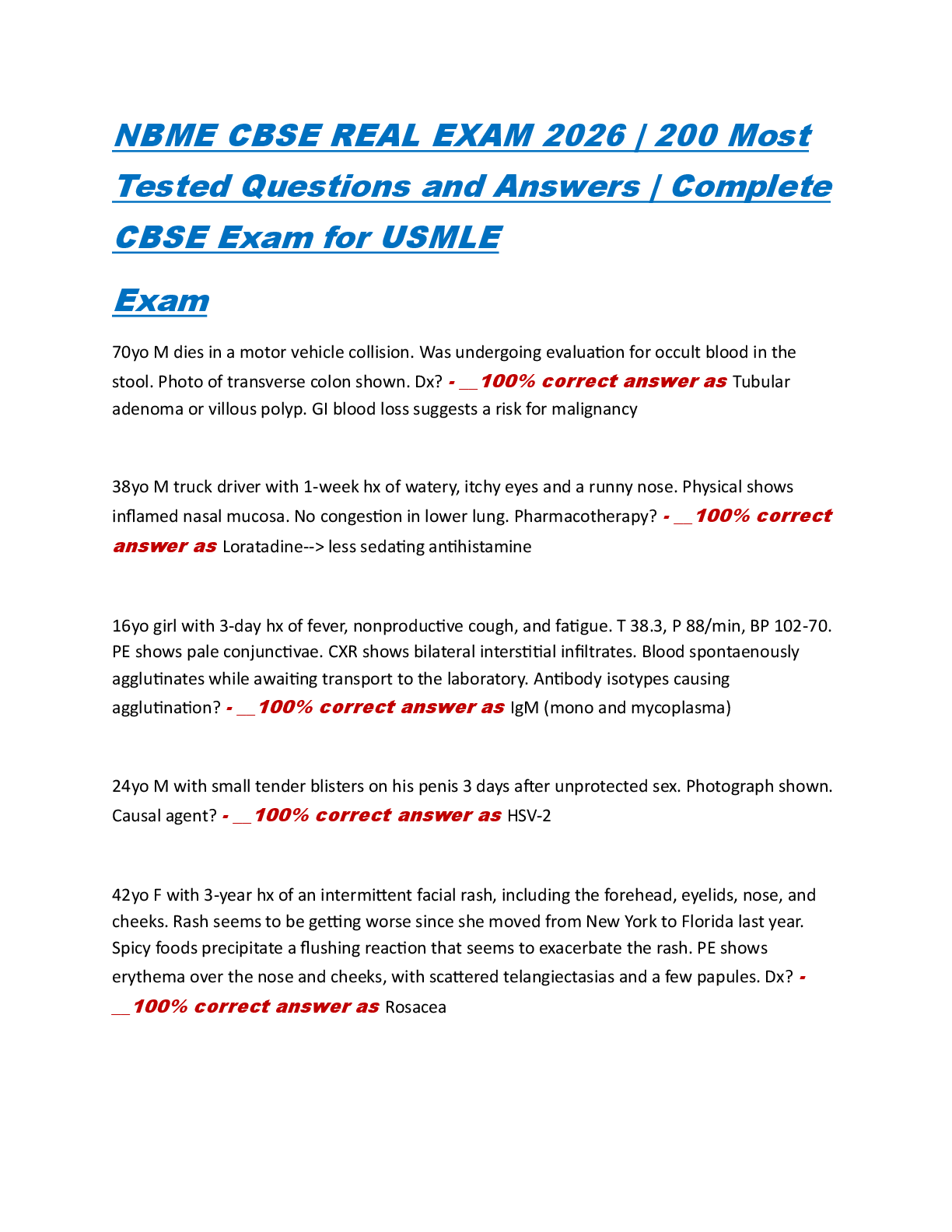Health Care > EXAM > NURS 6550 Midterm Exam – Question and Answers with Rationals (All)
NURS 6550 Midterm Exam – Question and Answers with Rationals
Document Content and Description Below
NURS 6550 Midterm Exam – Question and Answers with Rationals • Question 1 The AGACNP is caring for a patient who is quite ill and has developed, among other things, a large right sided ... pleural effusion. Thoracentesis is sent for pleural fluid analysis. While evaluating the fluid analysis, the AGACNP knows that a fluid identified as a(n) is the least worrisome type. 1 out of 1 points Response Feedback: “A” is the correct answer. A transudate is essentially just water and can occur as a consequence of increased hydrostatic pressure in the pulmonary vessels. It typically implies that the some condition has produced an imbalance in colloid-hydrostatic pressures, such as CHF or hypoalbuminemia. While it can represent a serious problem, it may also represent a transient imbalance. Conversely, “B” is not correct as an exudate has more protein in it and implies a condition characterized by protein leaking from vessels, such as a malignancy or some serious systemic stressor. “C” is not correct—a chyliform effusion is characterized by fat and indicates a pathology causing massive triglyceride degradation. “D” is not correct as a hemorrhagic effusion is blood and typically means traumatic injury. • Question 2 Mrs. Miller is transported to the emergency department by paramedics. She is having profound, unremitting chest pain, is diaphoretic and pale. She has jugular venous distention and a widened pulse pressure. Suspecting ascending aortic aneurysm, the AGACNP order which test to confirm the diagnosis? 0 out of 1 points Response Feedback: “D” is the correct answer. It is the most widely used diagnostic tool as it rapidly and precisely can outline the thoracic and abdominal aorta. “A” is not the correct answer—there are radiographic findings that suggest thoracic aneurysm, but they need confirmation by CT. “B” is not the correct answer as ultrasound is not nearly as precise as a CT scan. “C” is not correct—MRI is only indicated when the patient cannot have a contrast CT. • Question 3 1 out of 1 points Certain subgroups of the elderly population are at an increased risk for rapid deterioration and long-term care placement. Which of the following is not considered a high risk factor for long term care placement? Response Feedback: “A” is the correct answer; men are at higher risk for long-term care placement than women. In addition to male gender, other risk factors include age over 80, living alone, bowel or bladder incontinence, history of falls, dysfunctional coping, and intellectual impairment. • Question 4 A patient with anterior epistaxis has been treated with 20 minutes of direct pressure to the cartilaginous portion of the nose. Following pressure the patient is instructed to gently blow the nose. Expected findings in the patient who has been successfully treated include all of the following except a: 0 out of 1 points [Show More]
Last updated: 3 years ago
Preview 1 out of 63 pages
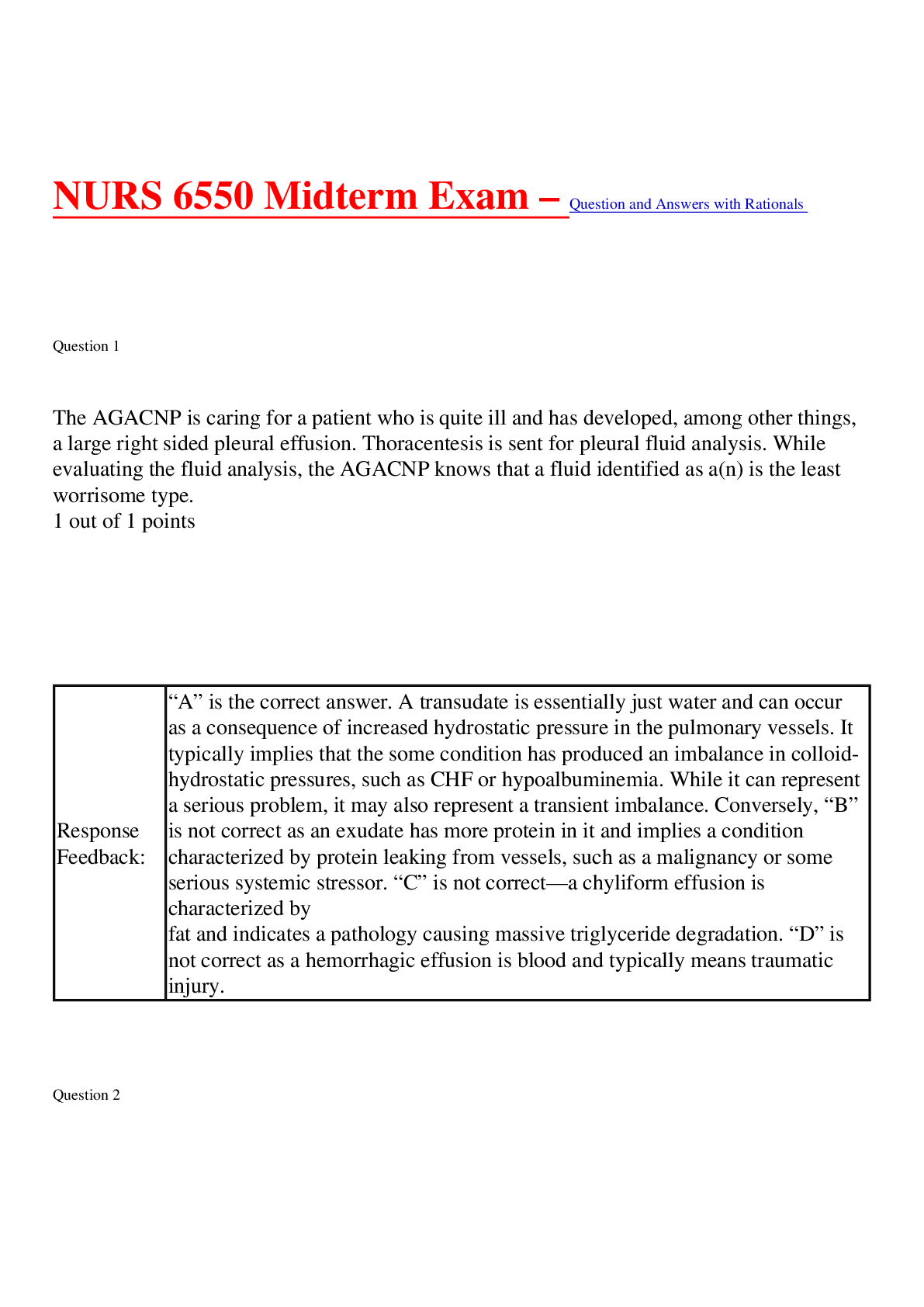
Buy this document to get the full access instantly
Instant Download Access after purchase
Buy NowInstant download
We Accept:

Reviews( 0 )
$18.00
Can't find what you want? Try our AI powered Search
Document information
Connected school, study & course
About the document
Uploaded On
Mar 08, 2021
Number of pages
63
Written in
All
Additional information
This document has been written for:
Uploaded
Mar 08, 2021
Downloads
0
Views
73












